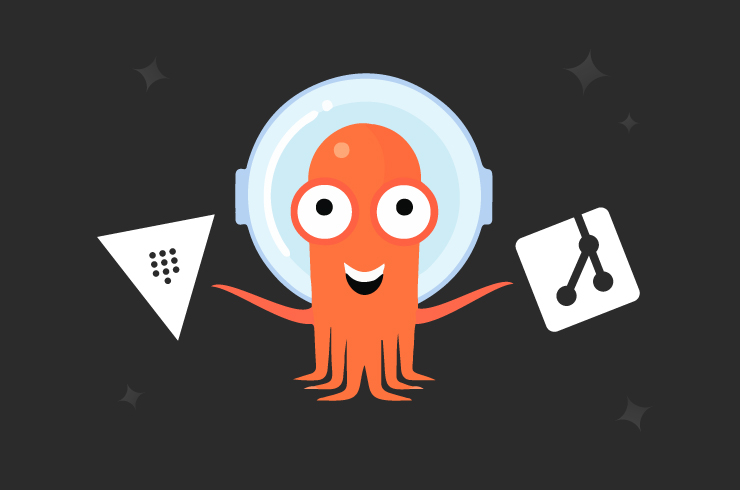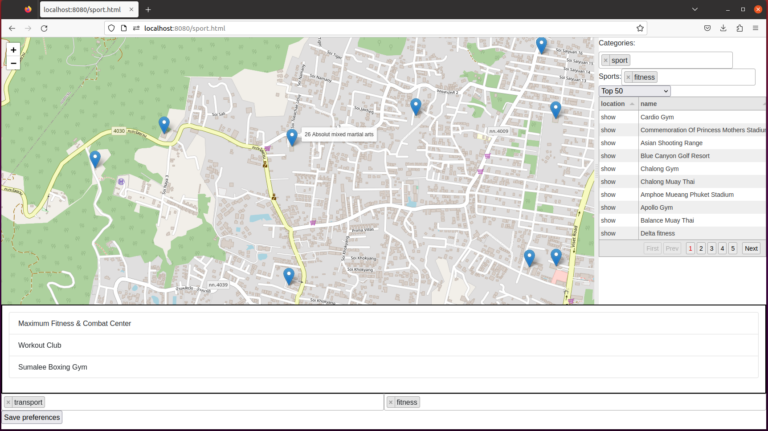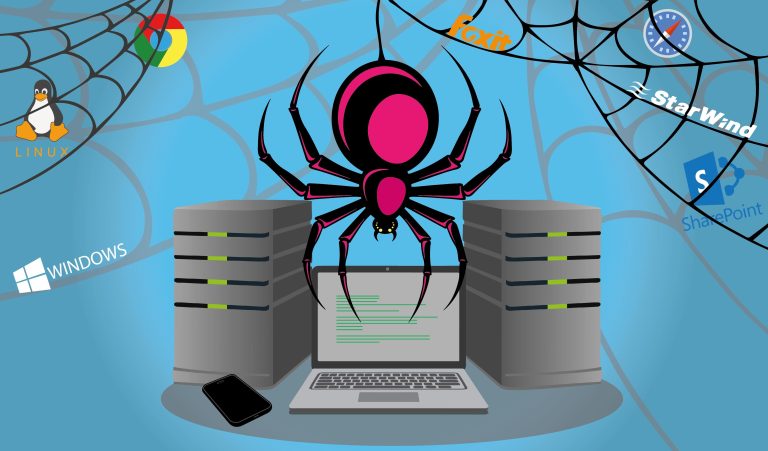The most successful and most scandalous Data Science project: Cambridge Analytica

Alexander Knicks, CEO of Cambridge Analytica. Decryption 2016 presentations.
Ladies and gentlemen, dear colleagues, I am honored to talk with you today about the impact of big data and psychography on the electoral process, and especially about the contribution that we made to the presidential election campaign of Senator Cruise.
It is easy to forget that just a year and a half ago, Senator Cruz was one of the less popular presidential candidates. He was the most criticized. In addition to this, his name was not well known – only 40% of voters heard about him compared to the store of Jeb Bush in the mid-80s. And he fought in one of the most competitive areas of republican politics. In addition, he was looking for a way to be heard among a largely homogeneous audience.
However, in May 2016, Senator Cruz became the only serious adversary, the only real threat to the Donald Trump phenomenon. So how did he do it?
Cruise’s company quickly used three technologies, three methods, which led them to success.
Behaviorism
The first of these technologies was behavioral science (behaviorism). I think it will be easiest to explain with an example. Imagine you now have your own private beach. And you want other people to stop using it.

You can put there such a sign, as presented here on the left.
It is very informative, and its task is to influence cultural attitudes. Or you can use the sign on the right. This is an example of behavioral communication. His goal is to probe the soil. It appeals to a more powerful, underlying motive. Undoubtedly, the fear of being eaten by a shark can become an obstacle to your desire to go swimming at their beach. However, this is difficult to do, and subsequently most communication campaigns (PR companies) still subdivide the audience by demographic and geographical indicators.
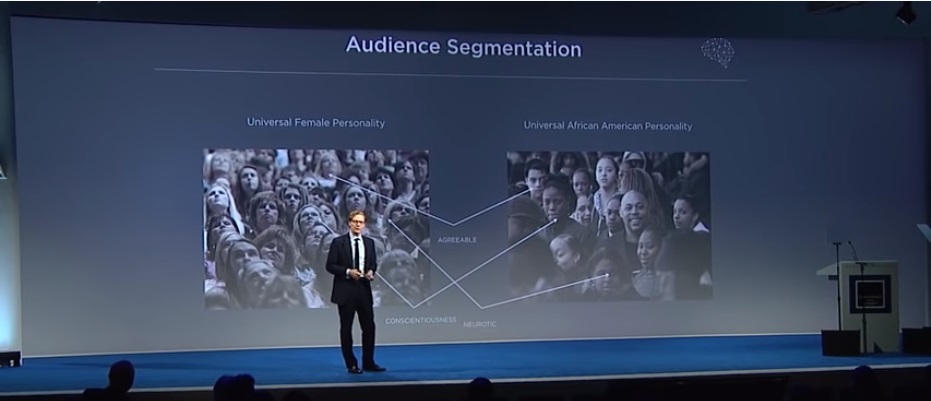
But if you think about it even for a second, such an idea begins to look ridiculous. The idea that all women will perceive the message the same way only because of their gender. Or that it will be so with absolutely all African Americans because of their race or with older people or rich or young people just because of the general demographic characteristics.
It just doesn’t make any sense. Of course, demographic and geographical indicators, as well as the economic situation will affect your worldview, but psychography is just as important or even more important. This is an understanding of your personal qualities, because it is they who control the behavior, and behavior obviously affects who you vote for.
So how is this possible? In Cambridge, we have introduced a detailed quantitative toolkit in order to discover the basic personal qualities and form an idea of personality. This is the most advanced model in experimental technology known as the OCEAN model.
OCEAN is an acronym for concepts such as:
- openness (Openness) – indicates the level of your readiness for a new experience;
- Conscientiousness – indicates whether you prefer order, habits and planning in life;
- Extraversion – indicates the level of your sociability.
- compliance (Compliantness) – means whether you can put the needs of other people, society, community above yourself;
- neuroticism (Neuroticism) – indicates how often you worry.

After conducting this survey among hundreds of thousands of Americans, we were able to create a model that is able to predict the personal qualities of every adult citizen of the United States of America.
So how does this affect marketing and communication in the election process?
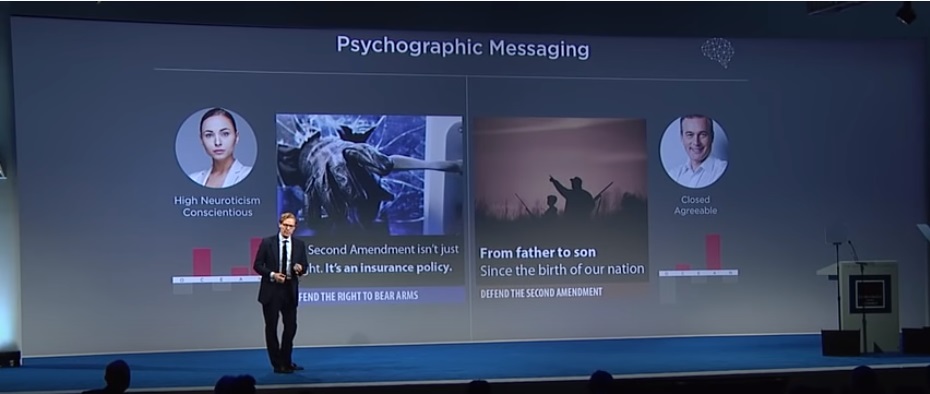 ”
”
At the primaries (intra-party elections) stage, the second amendment may be a popular issue among voters. If you know the nature of the people you are directing your speech to, then you can adjust your presentation and content so that your message responds better to your target audience.
So, for a very neurotic and conscious audience, you will need a message that is rational and based on the concept of justice or emotions. In this case, the threat of robbery and the possibility of obtaining an insurance policy for weapons will be very convincing. In the opposite case, for a more closed and compliant audience (these are people who attach great importance to traditions, habits, family, a sense of community. Maybe grandfather taught his son to shoot a gun, and the father, in turn, will teach his son) about their values will make the process of transmitting your message much more efficient.
Data analytics
The second leg of the stool is data analytics. Communication is now fundamentally changing. In the 60s (see Matthew Weiner’s Mad Man series), communication was carried out from top to bottom, driven by creative leadership. Then brilliant minds came together and composed slogans such as “Beans – means Heinz” (orig. Beanz Meanz Heinz) or “This is Coca-Cola” (orig. Coca-Cola Is It!). After they promoted these slogans to the audience in the hope that she would respond.
Today we don’t have to guess which creative solution will work. We can use hundreds and thousands of individual data points of the target audience to understand exactly which message will attract which audience much earlier than the creative process begins.

So what is big data?
Big data is the union of the largest possible number of individual data points. They are synthesized in one database, verified and then used to create an idea of the target audience.
This information may include data such as demographic and geographical indicators, age, gender, ethnicity, religious affiliation, and so on. It may also contain psychographics or your installation factors. These include everyday habits and preferences as a consumer: what kind of car you have, what goods you buy in stores, what magazines you read, which golf club you belong to, which churches you go to.
And, of course, it includes information about your personality, it is also behavioral information. We talked about it earlier. This is data about how you perceive the world, about what really drives you.

The easiest way to illustrate how big data works is through a life example. This is the data structure that we compiled for Cruise’s campaign in preparation for the contest (pre-election meeting) in Iowa. The layout looks intimidating, but it’s actually very simple.
Here you see the graph. The X axis shows the distribution of the party’s commitment level: ardent Republicans on the right, Democrats on the left. The Y axis indicates the likelihood that voters will come to the caucus: on the top of the graph are those who are most likely to do this, and those who are at the bottom do not have one at all.
This information is already quite useful for the campaign manager. But if we single out individual segments in this diagram, the information will become even more efficient.

In this case, we have identified a group that we call “Convinced.” These are people who will definitely vote and come to the focus. However, for them to start supporting Cruise, they need to be shifted slightly to the right of the center of the chart. To do this, they need a message that will convince them.
We can look at this group of about 45,000 people and see that their main features are low indicators on the neuroticism scale, fairly low on the openness scale, and slightly higher on the consciousness scale.
We can isolate individual concepts further. We can look at what issue they are particularly concerned about. I chose the right to weapons, which further narrowed the scope of analysis. And now we know that we need a speech on the rights to weapons, which must be convincing and necessarily built on the personality traits of those voters in which we are interested.

And we can see on the map where these people are. If we wanted to go further into the details, we could adjust the data at an individual level at which we have about 4 or 5 thousand data points for every adult citizen of the United States of America.
Targeted advertising
And finally, the technology of targeted advertising. It allows you to take all this offline information and compare it so that it becomes an engine of communication.
Global advertising. Global advertising, the idea that one hundred million people receive the same letter on the newsletter, see the same television and digital advertising, is dead.
My children, of course, will never understand this concept of mass communication. Today, communication is becoming more and more targeted. She individually adapts to everyone present here. Thus, you will never receive advertisements for goods and services that you are not interested in. You will see ads only of goods and services, or in the case of elections, of issues that are most important to you, and it will be tailored precisely to your worldview.
We can compare offline information using cookies, which becomes the engine of digital advertising in the form of banners on social networks and the like. We can, of course, use this information to customize advertising in mailing lists. For example, the husband and everyone else in the family receives the same newsletter. However, his wife may receive a slightly different letter from the mailing list, although it may even be on the same topic.
The most amazing thing is the fact that we can take this data and combine it with the information from the set-top box. Every time you watch TV, the programs that you watch are recorded, and this information is sent to your provider. And we can use the data that you watch to select programs that are watched by more people from the target audience in order to place ads in them.
This not only greatly reduces the price of advertising, but, of course, gives the best rates of return on investment.
So what were the results?
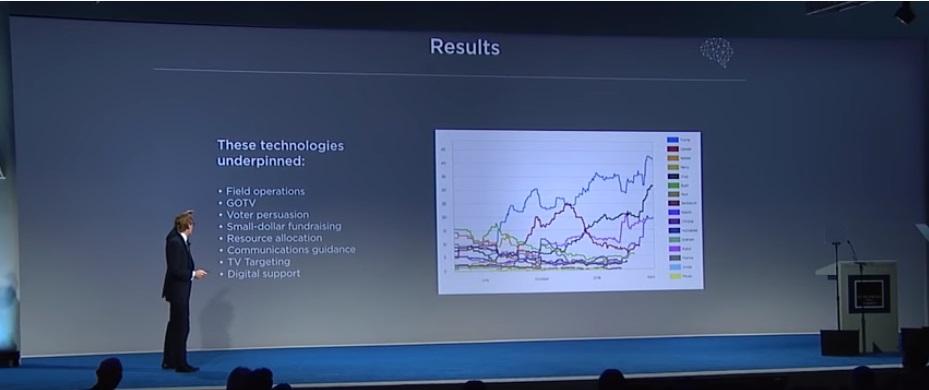
Ted Cruz applied our information, our behavioral ideas not only in the field of television and digital advertising, but also in his field operations, in the methodology of persuading voters, in a fundraising campaign, as well as in the allocation of resources.
And all this meant that he began with less than 5% of the vote and very slowly, but at the same time confidently, rose to more than 35%. What made him the second most menacing presidential contender in the race.
Of course, Cruise’s company is now over. But I can tell you that one of the two candidates who remained in the race in this election uses these technologies. It will be very interesting to see how they affect the next seven weeks. Thank.
P.S.
Trailer for a documentary (available on torrents) about Cambridge Analytica

